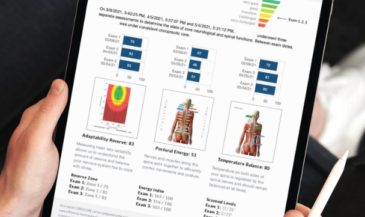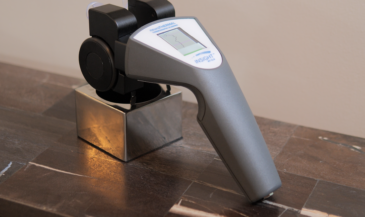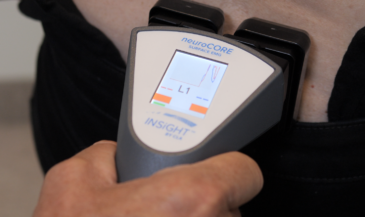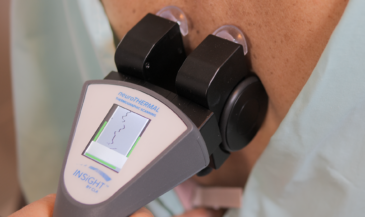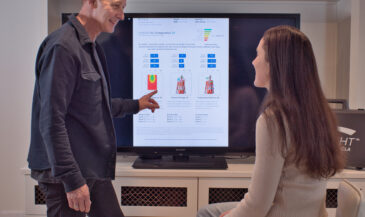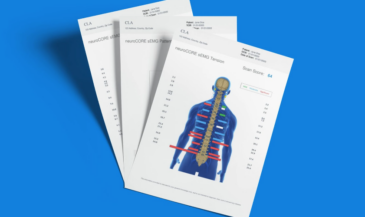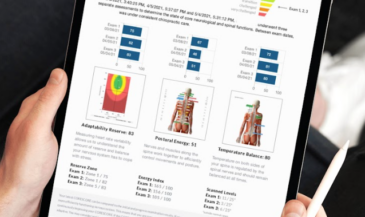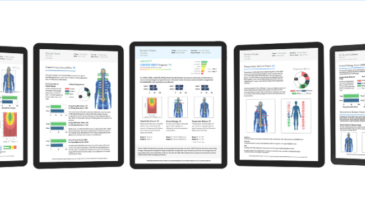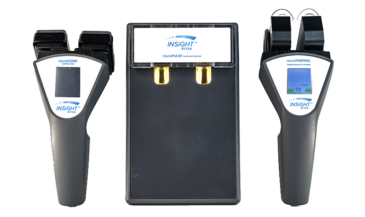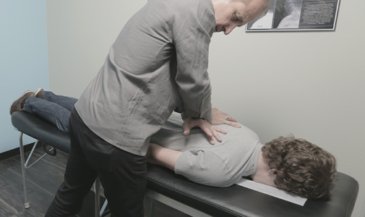Do you use the most efficient strategies to bring patients in and keep them coming back?
When you listen to the practice development gurus, everyone seems hyper-focused on organizing their message and their procedures around the New Patient experience. Attracting and getting new patients in the door is a key aspect of practice success. But it can’t stop there. Attracting and processing new patients should be viewed as the catalyst for a sequence of steps that ensure expert communication and long-term care-planning.
The most efficient and exciting offices put that same energy into re-exams, and focus on communicating the importance of ongoing care through their examination, reporting and care-planning strategies. A key success factor in mastering care planning that not only successfully attracts new patients but that keeps them coming back is knowing how to effectively Block Book.
What is Block booking?
Block booking is a scheduling strategy that is simple and yet remarkably effective. It starts by dividing the appointment book into short visit adjusting times, and long visit blocks of time. This may require a rethink of office procedures as they are now. I’m sure you will find the payoff will be exceptional.
Short visit blocks
Short visit blocks should be clustered around the most desirable times in both the morning and afternoon shifts. These are the untouchable “golden” times in any appointment booking system because they cater to the ongoing ease of getting in and getting out that every patient covets.
Long visit blocks
Long visit blocks should be sandwiched between these short visit “chunks” allowing for more detailed,longer visits like exams, reports and consultations.

Talk Beyond Symptoms!
Chiropractors often focus their attention on Day 1-2 procedures, but many forget that that is only the start of what can be a remarkable multi-year relationship with your patient. Whether or not patients have immediate needs or if they are searching for answers to deeper health issues, they all require a care plan that will provide them with clinical updates and trusted advice.
Re-exams and progress reports create the opportunity to build on the initial message that changing spines is only a small part of the magic of receiving chiropractic adjustments. The hallmark of great retention and referral practices is not how Day 1-2 are managed but rather, how ongoing re-exams and reports are scheduled and delivered.
A mindset of managing a care plan beyond a patient’s pain or symptoms is essential. Health promotion that extends further than symptom care is why chiropractic exists. By looking deeper than the muscles and joints and into a patient’s neural processing, brings invisible stress to life. INSiGHT scans were designed to show patients the “stains” that ongoing stress have made on their nervous system.
INSiGHT scans deliver consistent objective data from the initial exam to every other ongoing re-exam along their path towards wellness. The scans bring to life how adjustments can be the answer to so much more than they ever expected from their chiropractic experience.
Initial exams are essential to begin the process but the real magic for both the doctor and the patient comes from reviewing PROGRESSIVE change and adaptability. This can only be accomplished by dedicating to a re-exam/re-report approach that highlights spinal/neural habits.
When should Block Booking start?
In the early days of practice, an open door policy for new patient appointments usually exists. “C’mon in! Let me help you right away”. However, over time, this model of scheduling becomes unsustainable. Remarkably, many offices continue to see new patients and do reports “on the fly”. A Block Booking strategy consists of
I can refer out for x-rays but scanning the nervous system with an INSiGHT is the best technology a chiropractor could have in his or her office to show a patient we are nervous system doctors
Dr. David Fletcher
- Long visit blocks for activities such as exams and reports. These blocks can be strategically positioned in the quieter times of the morning and afternoon, traditionally after the early rush and before the after school crowd comes in. They can be as short as 15-20 mins and occur every hour or stretch to 30 minutes or more.
- Long visit blocks are reserved for either consults, examinations or reports (initial, progress, comparative and continuation). In certain circumstances, they can be for special appointments when extra time is required with a patient.

Doctors and staff must establish a good rhythm and be good ‘dance partners’.
Block booking demands a commitment from the entire team. The front desk chiropractic assistant must be empowered to offer the exact timing of an open Block time for New Patients.
There must also be a Block time for Report of Findings, so that there can be laser focused communication. This is where “dance training” really pays off. Teams need to commit to the concept of Block Booking short-visit/long-visit flow patterns and train on communicating office policies while knowing how to handle objections.
- When this is done in an invitational approach, patients will understand the benefits of having uninterrupted time with the doctor.
- In order to make this strategy fully functional it is important to get blocks of visits hardwired into your appointment booking system.
- Creating this formalized structure allows for effortless scheduling and encourages all team members to adhere to the Block Booking mindset.
- Typically, a care plan sets out the objectives and anticipated outcomes based on the time and frequency of visits.
These designated number of visits should be grouped together with each “chunk” ending with a re-exam and progress report. As teams learn to “dance” more effectively, offices will find that:
Some early progress reports can be added to the patient flow times and done tableside, especially if the report is more of an update where the scan and exam reports can be fast and to the point.
As care progresses, more detailed Comparative and Continuation Reports usually demand extra time to update the patients on their healing trends. Booking these reports into the Long Visit Blocks allows a private open dialogue on how the ongoing future care will proceed.
At all times, the doctor must be time-conscious and not bleed exam and report times into the adjusting times. If a clinical/scanning CA is on the team, they usually become the gatekeeper and timekeeper of these Block Booking events. The final piece of the scheduling “dance” relies upon the patient embracing the value of re-exams and updated reporting for this to work. When the scheduling strategies are hardwired and the entire team is trained and committed to support every aspect of Block Booking, the “dance” will flow seamlessly and is a work of art.

Where does the INSiGHT fit in?
When the INSiGHT is at the hub of their practice, Block Booking is the next ingredient to create seamless patient flow.
Re-exams become the centerpiece in their retention and referral practice model. It’s easy to see how the simplicity of blocking time out in any office’s schedule can reduce office stress while providing the opportunity to blend clinical excellence with communication.
Re-exams that deliver objective findings, confirm how powerful your care can be and allow you to communicate your message of chiropractic as it is meant to be.
CLA’s INSiGHT scanning technologies were designed to enrich the clinical, reporting and care-planning experience. The latest innovations in software and instrument development help to streamline the flow in any office and set the stage for consistent and exciting growth. Check out how INSiGHT scanning has changed offices around the world and get to know how the INSiGHT can make a difference in your office and career.









































